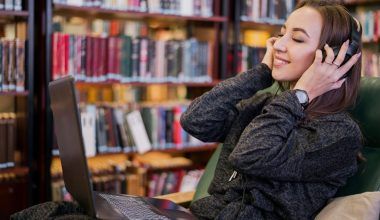Creating your own music album is a dream for many aspiring musicians. It’s a journey that requires passion, dedication, and a lot of hard work. But with the right approach, anyone can turn their musical ideas into a complete album that they can share with the world. In this guide, we’ll walk you through how to create a music album of your own, covering every step from planning and songwriting to recording and distribution.
1. Planning Your Music Album
The first step in how to create a music album of your own is planning. A well-thought-out plan will guide you through the process and keep you focused on your goals.
Define Your Vision and Theme
Before you start working on your album, it’s crucial to have a clear vision of what you want to achieve. Ask yourself:
- What is the message or story you want to convey?
- Who is your target audience?
- What genre or style will your music be?
Having a theme or concept for your album will help you stay cohesive in your songwriting and production.
Set a Budget
Creating an album can be expensive, especially if you’re hiring professionals for recording, mixing, mastering, and artwork. Set a realistic budget that includes:
- Recording studio time
- Musicians and producers’ fees
- Mixing and mastering costs
- Album artwork and design
- Marketing and promotion
By setting a budget early, you can avoid overspending and ensure that all aspects of your album are covered.
Create a Timeline
Time management is crucial in the music industry. Set a timeline with milestones for each stage of the album creation process. This could include:
- Songwriting and pre-production
- Recording sessions
- Mixing and mastering
- Artwork and album design
- Distribution and release planning
A timeline will help you stay on track and ensure that your album is completed on time. Proper planning is fundamental in how to create a music album of your own.
2. Songwriting and Composition
Once you have a plan, the next step in how to create a music album of your own is songwriting. This is where your creativity shines, and you start to bring your musical ideas to life.
Write Your Songs
Start by writing songs that fit the theme and vision of your album. You might already have some ideas or lyrics written down. If not, begin by:
- Jotting down ideas for lyrics
- Experimenting with melodies and chords
- Collaborating with other songwriters or musicians
Remember, songwriting is a process. It might take time to come up with songs that you’re satisfied with, so don’t rush it. Patience and persistence are key elements in how to create a music album of your own.
Arrange Your Songs
Once you’ve written your songs, the next step is to arrange them. This means deciding how the different instruments and vocals will work together. Consider:
- The structure of each song (verse, chorus, bridge, etc.)
- The tempo and key of each track
- The overall flow of the album
Arranging your songs is an essential part of how to create a music album of your own because it helps to ensure that your album sounds cohesive.
Demo Your Tracks
Before you head into the studio, it’s a good idea to create demos of your songs. These don’t have to be perfect but should give you a good idea of how the final tracks will sound. Demos will also help you communicate your ideas to producers and session musicians.
3. Recording Your Album
Recording is one of the most exciting parts of how to create a music album of your own. This is where your songs come to life with professional sound quality.
Choose a Recording Studio
If you don’t have a home studio, you’ll need to choose a professional recording studio. Look for a studio that:
- Has the equipment you need (microphones, instruments, etc.)
- Fits your budget
- Has a good reputation and experienced engineers
Choosing the right studio is a crucial step in how to create a music album of your own.
Record Your Tracks
When you’re in the studio, stay focused and work efficiently. Here are some tips for a successful recording session:
- Warm up your voice or instruments before recording
- Work closely with the engineer to get the sound you want
- Be open to feedback and suggestions from producers and engineers
- Record multiple takes to ensure you get the best performance
Recording multiple takes ensures that you capture the best version of your songs, which is vital in how to create a music album of your own.
Overdubbing and Layering
After recording the main tracks, you may want to add additional layers, such as backing vocals, harmonies, or extra instruments. This process, known as overdubbing, can add depth and richness to your recordings.
Editing and Comping
Once you’ve recorded all your tracks, it’s time to edit them. This involves:
- Choosing the best takes and compiling them (comping)
- Removing any unwanted noises or mistakes
- Aligning tracks to ensure they are in sync
Editing is a crucial step in how to create a music album of your own, as it helps to refine your recordings before they move on to mixing.
4. Mixing and Mastering
Mixing and mastering are the final stages of the audio production process in how to create a music album of your own. These steps ensure that your album sounds polished and professional.
Mixing Your Album
Mixing involves balancing the levels of different tracks, adding effects, and adjusting the overall sound. A good mix will:
- Ensure that all instruments and vocals are heard clearly
- Create a sense of space and depth in the music
- Enhance the emotional impact of your songs
It’s often a good idea to hire a professional mixing engineer, as they have the expertise and equipment to make your album sound its best. Mixing plays a crucial role in how to create a music album of your own.
Mastering Your Album
Mastering is the final step in the audio production process. It involves preparing your mixed tracks for distribution by:
- Equalizing the tracks to ensure a consistent sound across the album
- Adjusting the volume levels to industry standards
- Adding final polish and ensuring compatibility with different playback systems
Mastering is essential in how to create a music album of your own because it gives your album a professional, finished sound.
5. Album Artwork and Design
The visual presentation of your album is just as important as the music itself. Good album artwork can attract listeners and give them a sense of what your album is about.
Designing Your Album Cover
Your album cover should reflect the theme and style of your music. Whether you hire a professional designer or do it yourself, keep these tips in mind:
- Use high-quality images or illustrations
- Make sure the design is clear and readable, even in a small size
- Include your artist name and album title prominently
Designing your cover carefully is vital in how to create a music album of your own.
Create a Complete Package
In addition to the cover, you’ll need to design the rest of the album package, including:
- The back cover with the tracklist
- Booklet with lyrics, credits, and acknowledgments
- CD or vinyl label design
This step in how to create a music album of your own ensures that your album looks as professional as it sounds.
6. Distributing Your Music Album
Now that your album is complete, it’s time to share it with the world. Distribution is a crucial step in how to create a music album of your own, as it determines how your music will reach listeners.
Choose a Distribution Platform
There are several digital distribution platforms that can help you get your album on streaming services like Spotify, Apple Music, and Amazon Music. Some popular options include:
- Deliver My Tune
- TuneCore
- CD Baby
- DistroKid
Choose a platform that fits your needs in terms of cost, services, and support. Distribution is an essential component of how to create a music album of your own.
Set a Release Date
Plan your release date carefully. Consider timing your release to coincide with important dates or events, such as festivals, holidays, or anniversaries. Give yourself enough time to build up anticipation with your audience.
Marketing and Promotion
Promotion is key to the success of your album. Here are some strategies to consider:
- Social Media Campaigns: Use platforms like Instagram, Facebook, and Twitter to build excitement and engage with your audience.
- Music Videos: Create music videos for your singles to attract more listeners and provide visual content.
- Press and Media Coverage: Send your album to music blogs, magazines, and radio stations for reviews and airplay.
- Live Performances: Plan album release shows or tours to promote your album directly to fans.
Marketing is a critical part of how to create a music album of your own because it helps you reach a wider audience and increase your chances of success.
7. Releasing and Beyond
Releasing your album is not the end of the journey. There are still important steps to take to ensure your album’s long-term success. How to create a music album of your own also involves post-release activities that sustain its momentum.
Engage with Your Audience
After your album is released, stay engaged with your fans. Use social media, email newsletters, and live performances to keep the momentum going.
Monitor Your Sales and Streams
Keep track of your album’s performance on streaming platforms and digital stores. Use analytics tools to understand your audience and refine your promotional strategies. Monitoring is a key part of how to create a music album of your own because it helps you gauge the success of your efforts.
Plan Your Next Steps
As you continue to promote your album, start thinking about your next project. Whether it’s another album, a single, or a tour, planning ahead will keep your music career moving forward. Continuously working on new music is an essential strategy in how to create a music album of your own.
In today’s digital age, social media plays a crucial role in how to create a music album of your own and successfully promote it.
Your social media accounts are powerful tools for connecting with your audience and promoting your album. Here’s how to maximize your online presence:
- Consistency: Post regularly and keep your audience updated on your progress.
- Engagement: Interact with your fans by responding to comments, hosting live sessions, and sharing behind-the-scenes content.
- Content Variety: Mix up your posts with photos, videos, polls, and stories to keep your audience engaged.
Building a strong social media presence is integral to how to create a music album of your own and ensure its success.
Create a Website or Artist Portfolio
A professional website or portfolio can serve as a hub for all your music-related activities. Include:
- Biography: Share your story and what inspires your music.
- Music: Provide links to streaming platforms where your album can be heard.
- Merchandise: If applicable, sell your merchandise directly through your website.
- Tour Dates: Keep your fans informed about upcoming performances.
Having a dedicated online space is crucial in how to create a music album of your own because it centralizes your online presence and provides a professional face to your brand.
9. Networking and Collaborations
Another important aspect of how to create a music album of your own is networking and collaborating with other musicians, producers, and industry professionals.
Collaborate with Other Artists
Collaborations can bring new perspectives to your music and help you reach new audiences. Consider:
- Featuring Other Artists: Invite guest musicians or vocalists to contribute to your album.
- Cross-Promotion: Work with other artists to promote each other’s work.
- Co-Writing: Collaborate with songwriters to bring new ideas and styles into your album.
Collaborations are a powerful tool in how to create a music album of your own because they expand your creative horizons and audience reach.
Attend Industry Events
Industry events, such as music conferences, workshops, and networking events, are great places to connect with professionals who can help you with how to create a music album of your own. These events can lead to:
- Mentorship Opportunities: Learning from experienced artists and producers.
- Partnerships: Forming alliances with other musicians, labels, and promoters.
- Exposure: Getting your music heard by industry influencers.
Networking is an essential strategy in how to create a music album of your own that can open doors to new opportunities.
10. Monetizing Your Music
After successfully releasing your album, the next step in how to create a music album of your own is to monetize it.
Streaming Royalties
Ensure your music is available on all major streaming platforms like Spotify, Apple Music, and Amazon Music. These platforms pay royalties every time someone streams your songs. Although the payout per stream is small, it can add up over time, especially if your album gains popularity.
Selling Physical Copies
Even in the digital age, physical copies of music, such as CDs and vinyl records, remain popular among fans. Selling physical copies can be a profitable aspect of how to create a music album of your own.
Merchandising
Merchandise, such as t-shirts, posters, and accessories, is another way to generate income. Creating merchandise related to your album can help build your brand and provide fans with tangible ways to support you.
Licensing Your Music
Consider licensing your music for use in films, TV shows, advertisements, and video games. Licensing can be a lucrative part of how to create a music album of your own, offering exposure and additional income streams.
Live Performances and Tours
Performing live is one of the most effective ways to promote your album and connect with fans. Organize a tour to coincide with your album release, and consider offering special editions or exclusive merchandise at shows. Live performances play a significant role in how to create a music album of your own and capitalize on it.
11. Long-Term Strategies for Success
Success in the music industry requires more than just one album. How to create a music album of your own is the beginning of a long-term journey.
Keep Releasing Music
After your first album, continue creating and releasing new music. Whether it’s singles, EPs, or another album, keep your audience engaged with fresh content. Consistent output is key to maintaining momentum in how to create a music album of your own.
Engage with Your Fanbase
Your fans are your greatest asset. Keep them engaged through:
- Exclusive Content: Offer exclusive tracks, behind-the-scenes footage, or early access to new releases.
- Fan Interaction: Regularly interact with your fans through social media, emails, and live events.
- Community Building: Create a fan club or online community where your most dedicated fans can connect with you and each other.
Engaging with your fanbase is an ongoing part of how to create a music album of your own that ensures lasting success.
Adapt to Industry Changes
The music industry is constantly evolving. Stay informed about new trends, technologies, and platforms that can affect how to create a music album of your own. Being adaptable and open to change will help you stay relevant and successful in your music career.
Plan for the Future
Always be thinking about your next move. Whether it’s planning your next album, exploring new genres, or expanding into other areas like film or production, having a forward-thinking mindset is crucial in how to create a music album of your own and sustaining your career.
Conclusion
Creating your own music album is a rewarding experience that allows you to express yourself creatively and share your music with the world. By following these steps on how to create a music album of your own, you’ll be well on your way to turning your musical dreams into reality. Remember, patience and perseverance are key, and with the right approach, your album can make a lasting impact.
For further reading, explore these related articles:
- Top Music Distribution Companies in India
- How Does Music Distribution Work?
- Create a Music Band Website
For additional resources on music marketing and distribution, visit Deliver My Tune.






